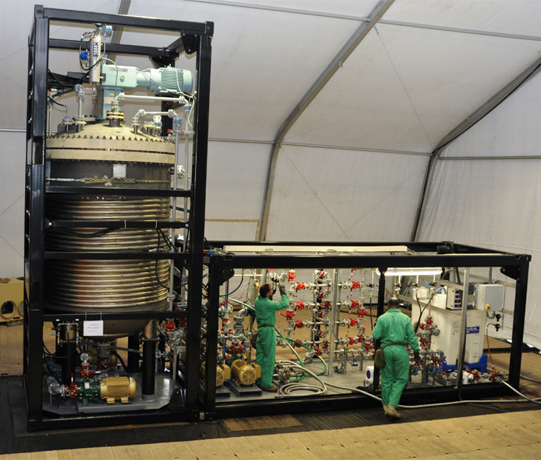
The Field Deployable Hydrolysis System (FDHS)
FDHS is a transportable, high throughput neutralisation system designed to convert chemical warfare materiel into compounds not usable as weapons. The FDHS furthers the Department of Defence mission of chemical agent disposal operations and can be used to neutralise bulk amounts of known chemical warfare agents and their precursors. Neutralisation is facilitated through chemical reactions involving reagents that are mixed and heated to optimise throughput with a destruction efficiency of 99.9 percent. Source: CBARR
Field Deployable Hydrolysis System Site Layout
The transportable FDHS is a self-sufficient system that includes power generators and a laboratory that is fully capable out of the box, needing only consumable materials such as water, reagents and fuel to operate. It can be set-up within 10 days and is equipped with redundant critical systems that ensure maximum system availability. Once onsite a crew of 15 trained personnel, including SME support, is needed each shift for 24/7 operational capability.
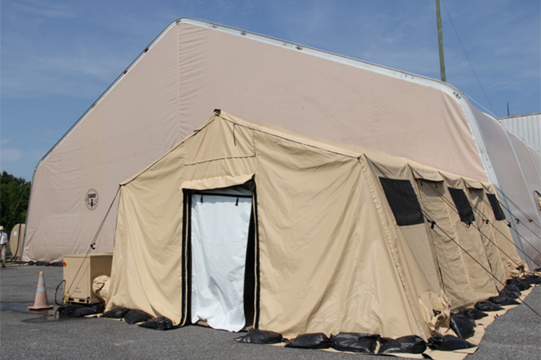
Breathing Air Compressor
Air supplied to operators inside the enclosure during Occupational Safety and Health Administration (OSHA) Level B operations is generated from a Breathing Air Compressor that is contained inside a 20-foot transportable container.
Personnel Decontamination Station (PDS)
Operators enter and exit the enclosure through the PDS. The General Purpose Structure includes dedicated air conditioning and provides support for operator decontamination. Personnel Protective Equipment (PPE) includes Tyvek coveralls, and OSHA Level C and OSHA Level B respiratory protection. Emergency response personnel onsite within the PDS will be prepared to enter the operations area in the event an upset condition occurs within the enclosure
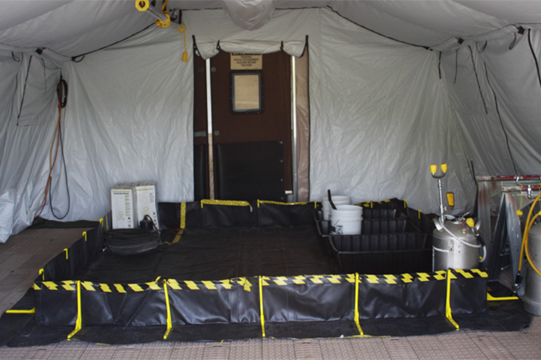
Chemical Agent Filtration System (CAFS)
A 5,600-cfm chemical agent filtration system provides ventilation to the enclosure during operations. The system contains a pre-filter, High Efficiency Particulate Filter (HEPA), dual bed carbon filters and a secondary HEPA filter that provides air exchanges and hazardous chemical vapour removal from the enclosure prior to vapour release to the environment.
Hydrolysis System
Process flows using the appropriate chemistry achieve 99.9 percent destruction. The titanium reactor has a 2,200-gallon capacity and throughput varies from five to 25 metric tons per day, depending on the material being treated. Flow, pressure and temperature gauges all remotely feed to the control panel, where the process can be monitored and pump flow rates adjusted. On-board agent storage can hold 330 gallons and is useful for consolidating material from several smaller containers. To increase throughput rates, multiple units can be co-located onsite, which also enables the sharing of security and other assets.
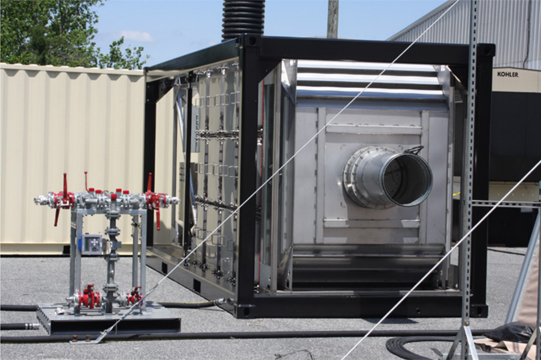
Water Pump and Water Tank
A 4,000-gallon water tank circulates water to system heaters. Water that is brought to the site is pumped into the water tank using a portable pump cart.
System Air Compressors
A compressor air system provides plant air to power pumps on the hydrolysis skid, flush out system piping and ventilate the reactor, agent storage tanks and waste containers.
Waste Containers
The FDHS neutralization process generates waste in volumes of five to 14 times the volume of chemical warfare material treated. As many as five waste containers rated for high temperatures are used for interim storage of effluent, which will be pumped from the interim containers after it has cooled. This hazardous waste can then be commercially disposed of in accordance with host-nation environmental laws.
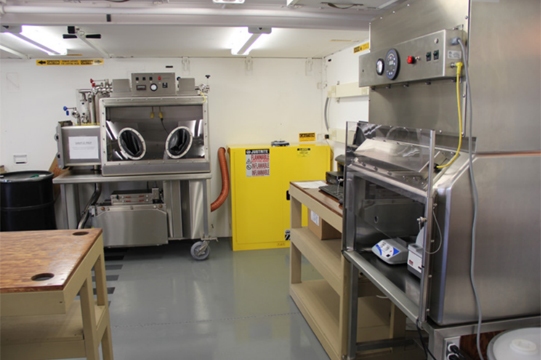
Reagents
Water, sodium hydroxide (NaOH) and sodium hypochlorite (NaOCl) are required for neutralisation of chemical warfare material and decontamination of system components. The FDHS uses mixing and heating to facilitate chemical reactions with the reagents, which optimise throughput with a destruction efficiency of 99.9 percent.
Lab
An onsite laboratory designed within a 20-foot expandable structure allows for standard transportation. The laboratory includes an environmental control unit, sample handling and storage capability, analytical systems suite and data management. This mobile lab is equipped with a ventilated glove box and fume hood for sample handling and preparation, as well as analytical instruments such as gas chromatograph/mass spectrometers and infrared spectrometers that are used to analyze liquid samples. This suite of equipment was specifically selected and developed to provide confirmation of the identification of the agent material prior to processing, and verification of destruction in the effluent.
Water Heater & Power Distribution
An onsite 20-foot container is divided into two parts that house the power distribution on one side of the container and water heaters on the other side. The heaters are designed to heat the water up to 90 degrees Celsius for HD processing, and are sized to heat water quick
Generators
Three 300 kW commercial generators provide electricity to the site. An automatic transfer switch ensures the site maintains power in the event of an outage of one of the generators. The power is distributed to systems throughout the site with cables specifically configured to allow for quick set-up
For more gists Like us on Facebook so we can be friends,follow us on Twitter to talk and subscribe to our youtube channel for musical videos and news



Thank you for your outstanding post. You have used an air compressor for your work. Yes an air compressor is really useful tools. But you have to find out the best air compressor for your any projects.
ReplyDelete